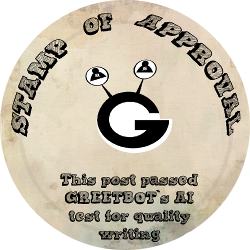
The Bitcoin, unlike traditional banking system, is based on peer to peer decentralized trust. Instead of centrally trusted authority trust is achieved by different participants participating in the Bitcoin Network
Let's try to understand bitcoin and other key concepts in a simple manner. John heard about a new coffee shop which sells amazing coffee and accepts Bitcoin as a payment method. John went to the coffee shop to buy coffee which costs 15$ and its equivalent amount in Bitcoin is 0.134 BTC(at the time of writing) John took his mobile phone, opened his wallet app, entered the coffee shop's Bitcoin address in the recipient field, entered the amount and hit the send button
Let's try to understand what happened here by understanding few key concepts while coffee shop owner is waiting for the confirmation of the transaction
Addresses, keys, wallet
Bitcoin address looks like a string of digits and characters that can be shared with anyone to receive payments. Here is an example of how Bitcoin address looks like

Keys are in the form of public key/private key pair. Bitcoin transactions are secured by public key cryptography, which guarantees the authenticity of the transactions. sender sign the transaction by the private key and attach the public key to it. Node in the network that receives the transaction can verify the authenticity of the transaction by the same public key
A wallet is just a software program which holds both of your keys and interacts with the Bitcoin network so that you can send and receive money. A user can have multiple numbers of private key/public key pairs associated with a single wallet. keep in mind that digital wallet doesn't store actual money(bitcoin) in the wallet like traditional wallets. wallets just secure your private keys which help to unlock your Bitcoin
The Blockchain

Bitcoins are not stored anywhere, there is no digital file like Bitcoin that someone owns. Ownership of Bitcoin is just an entry in the blockchain. To check how much Bitcoin a particular address owns we check the total amount received in all the transactions involved with that address.
Blockchain can be defined as incorruptible public ledger which records every transaction that has ever happened in the bitcoin system
Blockchain contains blocks filled with the transactions where every new block is linked to the previous block(parent). A number of nodes participating in the network in a rigorous energy and computation power consuming process known as mining which finally updates the Blockchain approximately after every 10 minutes. Instead of having one central location to store blockchain, a copy of blockchain is distributed among all the participants. anyone can participate and update the blockchain
Mining

Bitcoin network has peer to peer architecture. The term peer to peer means that all the users participating in the network are peers to each other. There are no special users in the network, There is no centralized service
Mining is a process by which by which Bitcoin is added to the supply. There can only be roughly around 21 million bitcoins that will ever be created. Mining is necessary to keep Bitcoin system Secure. Miners validate the transaction and put them into blocks and finally, these blocks are added to the blockchain. Transactions that become part of the block are considered confirmed, which allow owners to Bitcoin to spend the bitcoin they received in those transactions. Miners earn a reward for mining, they collect the new bitcoins added to the supply and the transaction fees from all the transaction included in the block. To collect the reward miners compete with each other to solve a difficult mathematical problem, which requires a lot of electricity and computing power.After approximately every 10 minutes a miner finds the solution of the problem and attach it to the mined block known as Proof of Work because it acts as a proof that miner has spent enough computing power and resources. After verification of that block by other miners that block is added to the blockchain. Mining is critical process in Bitcoin system as it works as a decentralized clearing house, by which transactions are validated and cleared
To sum up, miners perform basically four tasks:-
Independent verification of transaction by every miner
aggregating the transactions from the mining pool into blocks
competing with each other to find the solution to Proof of Work algorithm
independent verification of new blocks that are to be added into the blockchain
Let's go back to our coffee shop example, John's wallet application constructs a transaction of 0.134 BTC to coffee shop's owner address using John's private key and pushes that transaction into the Bitcoin network. Mike, who is a miner receives John's transaction checks if John's address have enough balance and it is signed by John's private key or not. After verification of the transaction, Mike put John's transaction into a block and compete with other miners to find the solution of the mathematical problem using Proof of Work Algorithm by spending computing power and energy. After approximately 10 minutes John is able to find the solution and add the solution to the block, other miners verify the validity of the block and if everything is okay Mike's block is next block which will extend the blockchain. Coffee shop's owner will checks if it has received a new transaction to its address and after the block is added to the blockchain coffee shop owner is able to spend those Bitcoin that it has received from John
Happy Investing
Hi. I am @greetbot - a bot that uses AI to look for newbies who write good content!

Your post was approved by me. As reward it will be resteemed by a resteeming service.
Resteemed by @resteembot! Good Luck!
The resteem was paid by @greetbot
Curious?
The @resteembot's introduction post
Get more from @resteembot with the #resteembotsentme initiative
Check out the great posts I already resteemed.